The land of dragons, pink beaches and fluorescent reefs
Sailing around Indonesia’s Komodo islands means venturing into wilderness inhabited by 3m long reptiles.
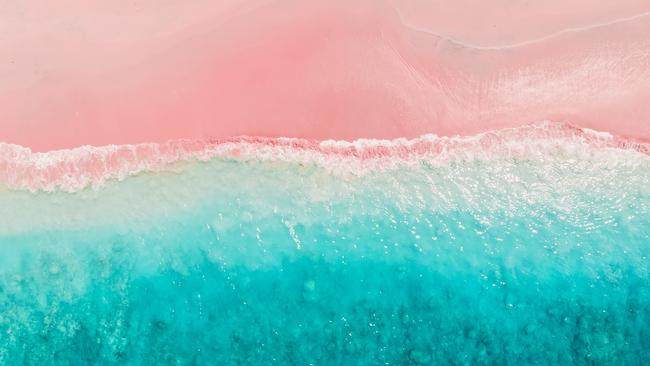
Dusk in the Komodo archipelago. Celestia slips like a cat among the sleeping-dog islands, heading for Pulau Kalong. We’re not alone. A dozen phinisi boats have gathered already, facing the island’s dark silhouette, waiting like cars at a drive-in for the show to begin.
The darkening sky, the oldest screen of all, flickers, comes alive with flitting, angular flak. Bats. Flying foxes. At first, hundreds and soon thousands billow out from Kalong’s mangroves, setting forth on their nightly forage.
Lazing on sailing ship Celestia’s upper deck we’re foraging in our own way on snacks and cocktails. We fall silent as the dark wave surges overhead with the muted thrum of thousands of tiny wings. “A bat symphony,” murmurs someone.
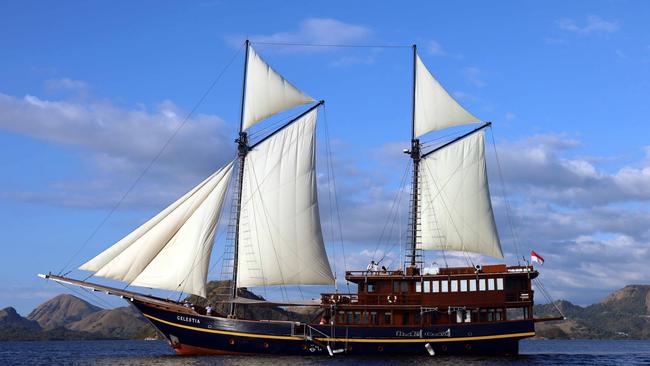
Indonesia’s Komodo National Park, a cluster of islands an hour east of Bali and a short cruise west from Flores, is a UNESCO World Heritage domain of unique creatures, remnant volcanoes and fluorescent reefs. Sailing from Labuan Bajo, we’ll cruise its islands for four days, chasing pink beaches, bats and dragons.
The new and very smart Celestia is a 45m, two-masted phinisi. With traditional gaff rig sails and a soaring bowsprit, it looks like an updated version of the Bugis schooners that author Joseph Conrad would have known. Hand-built in South Sulawesi, Celestia’s elegant ironwood hull is that of a classic phinisi, now a UNESCO-listed heritage design.
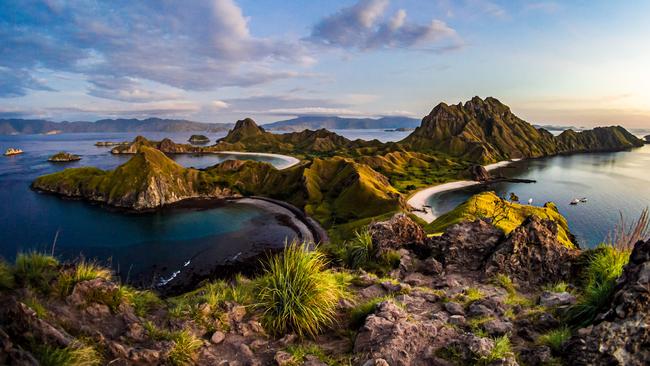
We fortunate guests – mostly American and Asian – find that tradition is no barrier to modernity. As a luxury vessel Celestia has seven spacious, airconditioned ensuite cabins, dining saloon, balcony nooks, sun deck and a galley fit for its master chef.
It’s time to get wet. Arriving at a reef nicknamed “turtle city” off Sebayur Besar Island, we don masks and fins, and plunge overboard. The reef blooms below with its proliferation of similes – coral fans, brains, clouds, staghorns, bommies and more. Words just don’t work down here amid a phantasmagoria of a thousand species of fish and 350 of corals.
“Turtle city” soon lives up to its tag. We spot a green turtle, and it sees us too. Alert, not alarmed, it casually spirals downward, finding a cleft in the reef where it settles perfectly on the seabed, like a piece in a jigsaw puzzle, there to rest unseen in plain sight.
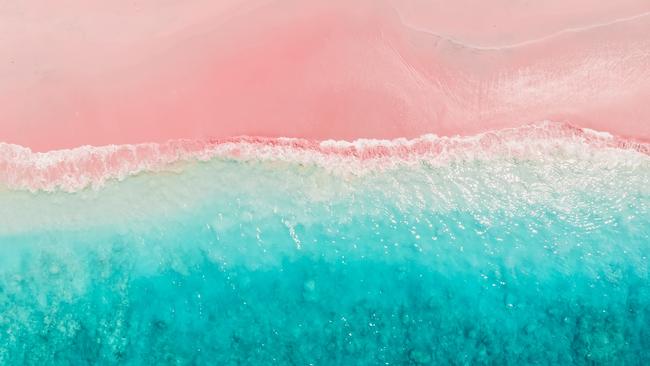
After the reef session we gather at Celestia’s social hub, the shaded main deck table for dining-drinking-talking-everything purposes. Our first lunch under the eye of executive chef Wayan Kresna Yasa is a lipsmacking affair. He serves up a Balinese chicken dish that one guest describes as a “religious experience”. It’s a taste of things to come. Sourcing 90 per cent of their ingredients from local providers, the galley team doubles our island exploration into a culinary journey.
The progressive feast sees us sampling new Indonesian specialties each day: red snapper, octopus, bubur ayam (chicken congee), tempeh lodeh soup and left-field combos such as arancini with jackfruit. Spices are optional but the table favourite is Balinese sambal matah, a fiery, shallot-based salsa. “Wow! Full-face spice,” says Sinna, a chilli connoisseur from Los Angeles. With face flushed and eyes still watering he goes for seconds.
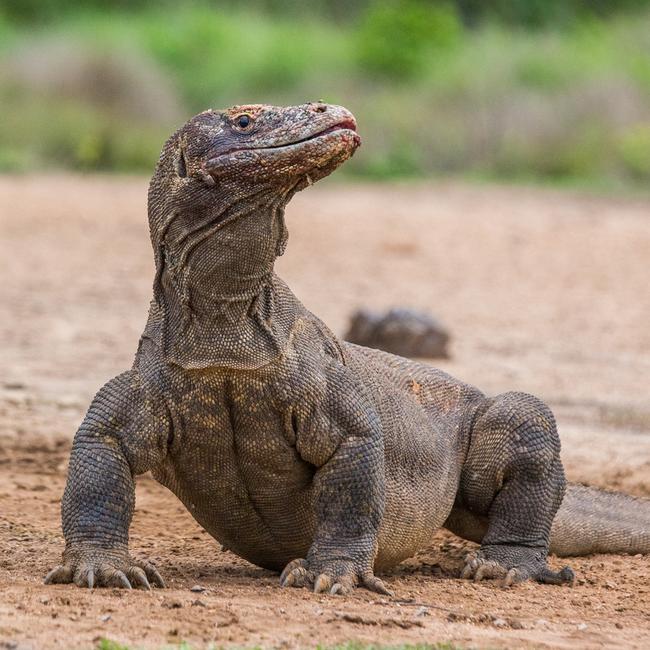
Dark-hulled, white-sailed Celestia is the brainchild of Indonesian siblings Jasmine Chong and Jason Tabalujan. New York-based fashion designer Jasmine, who is sailing with us, tells how she had watched, fascinated, as traditional Makassan boatbuilders crafted “this majestic vessel by hand, and with so much care”. Several of the builders stayed on and now crew aboard their creation.
We’re far from alone in these waters – about 50 phinisi cruise the islands each year. Celestia anchors for the night off Pulau Padar so we can rise at dawn to beat the weekend crowds trekking to the island’s 623m summit. It’s a sweaty, panting climb of 900 steps, but worth it.
Aftermath islands lie scattered to the horizon, upheaved by ancient volcanic tantrums. “This place has serious geological gravitas,” reckons Tedi, a young American writer, as we survey Padar’s coastline of scalloped bays and collapsed calderas. Their pale shallows deepen to offshore blues where our phinisi rides at anchor. But first a barrage of selfies, poses and panoramas before we trip a lighter fandango back down to the mother ship and breakfast.

Onboard the Celestia
Each time we reboard Celestia, its energetic Indonesian crew welcomes us with chilled face-towels and cool drinks. On the other hand, whenever we depart on an excursion, a cheering send-off soon seems mandated, too ritual. Celestia is a true sailing vessel but time, tide and airline schedules dictate that, like most cruise craft, we sail mainly before a diesel wind. I chill in my cabin, one of two upper deck Owners Staterooms. The finely tuned tropical decor features Indonesian teak, handwoven rattan, brass fittings and Roman blinds. The bathroom amenities and sunscreen, custom-made for Celestia, are reef safe. From the linen expanse of my bed I can gaze aft, beyond a private balcony with daybed and all the way to the horizon. Joseph Conrad, surely appalled at such cushiness, would order me to get real, sailor, go swab a deck, trim a topsail.
Karang Makassar, aka Manta Point, is a blindingly white sandbar suspended in Tahitian-grade turquoise waters. Jennifer, Celestia’s savvy cruise director, introduces several guests who have never before snorkelled to the raptures of the reef. Parrotfish and wrasses zip past them. Fusiliers and groupers glide by. As though on call, a namesake manta ray appears below, its wings scudding lazily across the sandy floor. The newly anointed snorkellers surface, ecstatic and converted.
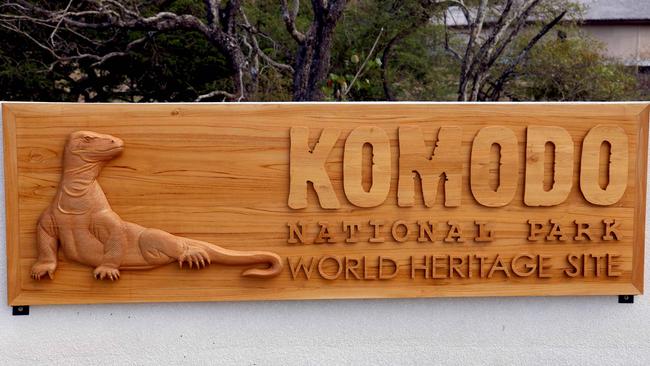
Exploring Pink Beach
Late afternoon we go ashore at Pantai Merah – Pink Beach – where the shoreline sands blush with finely granulated red coral, and the beach is littered with deep red chunks of the stuff, some the size of apples. There are in fact two Pantai Merahs but Jennifer has brought us to the less well-known one. Exploring its dunes I find a sign that announces the equivalent of “Beyond here be dragons” – a reminder of the archipelago’s eponymous superstar and visitor magnet, Varanus komodoensis.
And so, enter the dragon. Next morning, from a raised walkway at Loh Buaya Reserve on Rinca Island, we watch as a prowling 3m Komodo dragon tracks a Javan rusa deer. Its freakish physique and bandy gait suggest a nightclub bouncer doing slow-mo push-ups in a chainmail tux. The deer, a Club Komodo survivor – so far – keeps 20 wary metres ahead of its ominous stalker.


Komodo National Park
We enter the park grounds with a local guide who’s armed with a forked wooden pole; it’s not quite St George’s dragon-slaying sword but allegedly enough to pin down a 90kg steroidal goanna until we might flee. Up a tree?
There are about 3160 dragons – the world’s largest lizard – spread across five islands in Komodo National Park. “We love them and they love us,” a guide told me on an earlier visit, referring to the local creation myth of Putri Naga, the Dragon Princess, who bore twins, one human and one dragon. Komodo islanders see these apex predators as their ancestral siblings, not foes.
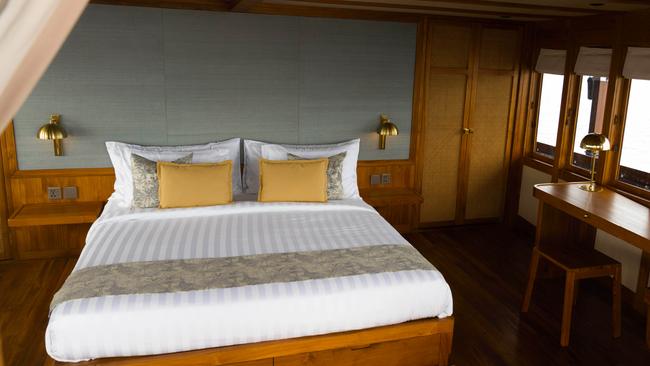
Everyone asks, so, for the record, the best-known adult victim of a dragon was a tardy Swiss baron who met his fate on Komodo Island in 1974. As my guide put it, “Mr Baron got too far behind his walking group. When he was missed a search party went back but all they found was his camera and hat. Like we say, ‘You never see the dragon that gets you.’ ”
Tomorrow we must jump ship. The lights of Labuan Bajo glitter in the distance. A long, slow-burn sunset ignites an empire of clouds as we splash ashore on the private beach where the men and women of our remarkable crew have prepared a farewell spectacle: tables, chairs, linen, silverware, palm frond shelters, barbecue, tender steaks, quality wines and a sound system. The candle-lit last supper segues, of course, into a beach party. The crew, guitars in hand, cranks it up and we all get down, singing and dancing in the sand. The last thing I remember is refusing the karaoke mike, always a fitting note to end on.
In the Know
Celestia Yacht offers bespoke Indonesian voyages with charters ranging from three to seven nights in the Komodo islands, and seven to 14 nights in other Coral Triangle regions. Minimum charters are Komodo, four nights; and Alor, Raja Ampat and Spice Islands, seven nights each. Celestia has seven cabins and accommodates 14 guests. Fully catered (with the exception of alcohol), it charters on an exclusive-occupancy basis for $US11,000 ($17,000) a night plus tax.
John Borthwick was a guest of Celestia Yacht.
FOR MORE STORIES ON CRUISING, CLICK HERE




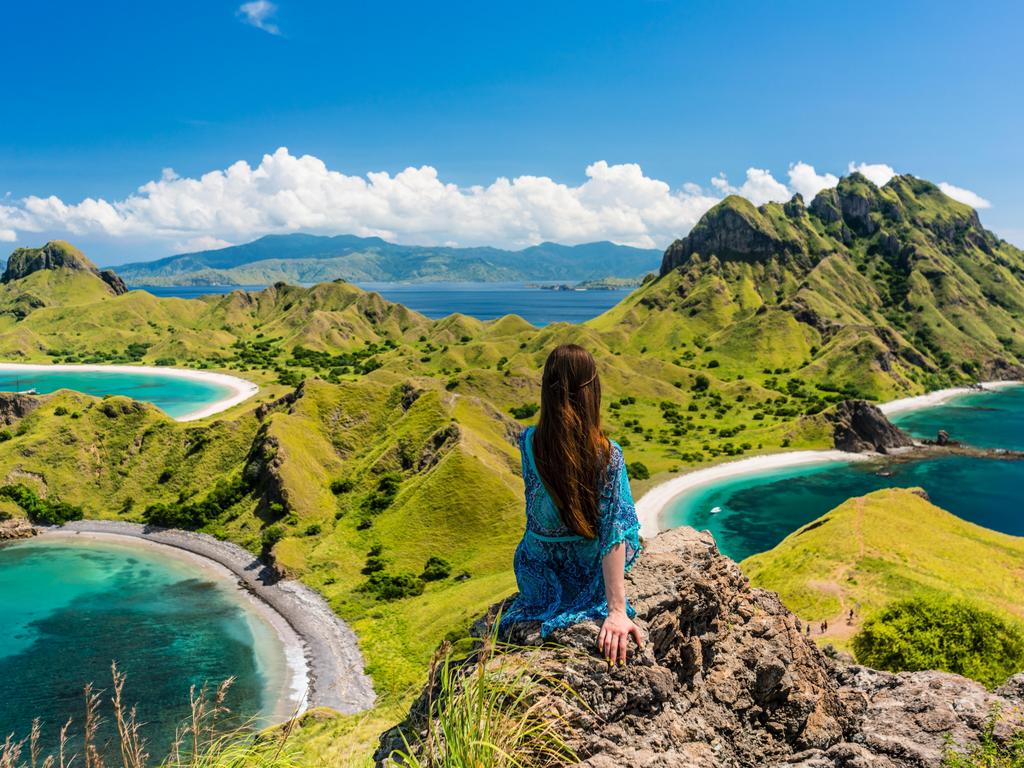
To join the conversation, please log in. Don't have an account? Register
Join the conversation, you are commenting as Logout